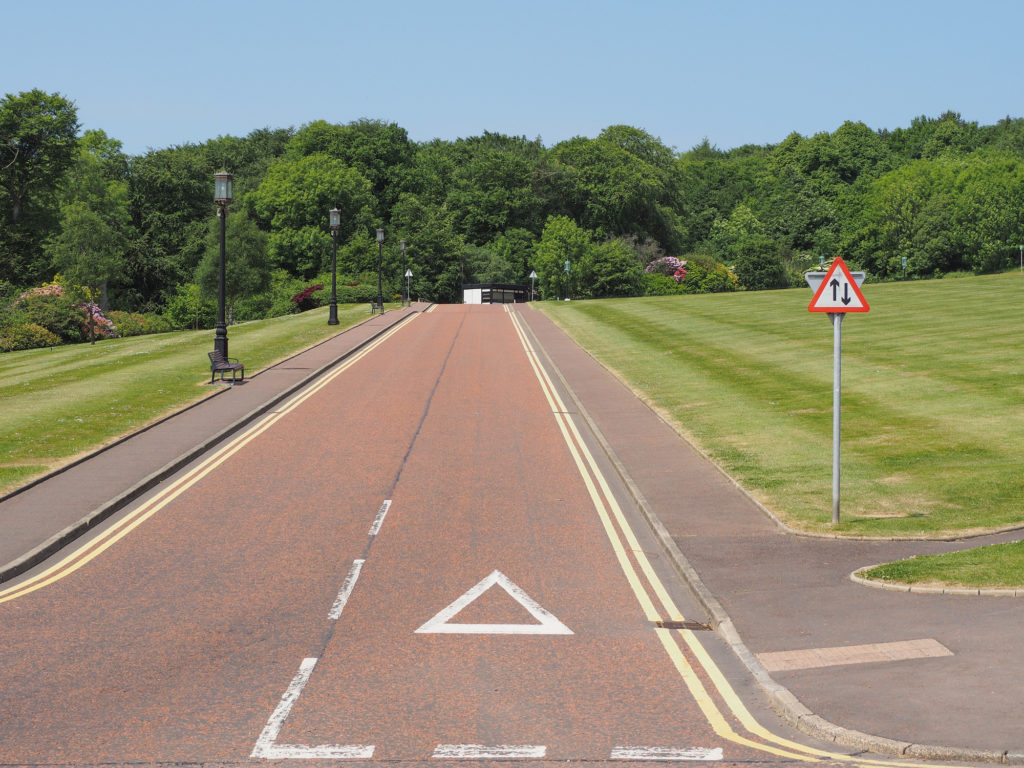Road markings are like a language written on the road. And if you want to pass your theory test and become the best possible driver, you’re going to have to learn to speak that language!

In this post we’ll explain what the various road markings mean, and what you should do when you encounter them while driving. This is the sort of information that might come up in your theory test, so it’s certainly worth familiarising yourself!
Types of Road Markings
Broadly, there are three types of road markings. There are road markings which:
- Go across roads
- Go along the middle of carriageways
- Go along the edge of carriageways
We’re going to look at each of these in more detail.
Types of Road Markings Across Roads
These come in many forms, but they all mean essentially the same thing: STOP! Examples of stop lines include:
- Solid white line – stop lines at signals, police control, or stop signs
- Dotted line – stop lines for pedestrians at a level crossing
- Two rows of dotted lines – give way to traffic on major roads or mini roundabout
- Wider-spaced dotted lines – give way to the traffic from the right at roundabouts
- Wider and thicker dotted line – give way to traffic from the right at a mini roundabout
Types of Road Markings Along the Middle of Carriageways
All of these road markings are designed to separate lanes from each other, and to warn you of potential hazards, such as:
- Edge lines – a solid white line at the edge of the road.
- Centre lines – evenly spaced white lines in the middle of the road.
- Hazard warning lines – a solid white line with an occasional smaller line running alongside it.
- Double white lines – these can either be a pair of solid white lines running down the middle of the road, or a series of parallel lines containing two diagonal lines.
You can find a detailed guide to what these various lines mean, and the rules they communicate, through looking at Rules 127 – 131 of the Highway Code.
Types of Road Markings Along the Edge of Carriageways
These road markings are essentially designed to communicate stopping and waiting restrictions.
Examples include:
- Single yellow lines – you can stop to load or unload, unless specific waiting restrictions are specified by separate signage.
- Double yellow lines – you cannot stop at any time, unless seasonal restrictions are specified by separate signage.
- Single red lines – to mark a Red Route in London, where no stopping is allowed for anyone apart from licenced taxis or Blue Badge holders. Nearby signs may detail when the restrictions apply.
- Double red lines – on these areas of London Red Routes there is no stopping at any time, for any reason.
Boxed areas along these road markings indicate designated areas where it’s OK to park. There will always be signs nearby explaining the restrictions. Red boxed areas on London Red Routes are only for loading and unloading, and for a maximum duration of 20 minutes.
Other Road Markings
Here’s some other types of road marking you may encounter on your travels:
- School zone – a zig-zagging yellow line featuring the words “School Keep Clear”. These areas must be kept clear of stationary vehicles, even if you’re picking up or dropping off your children.
- A white triangle – this is to warn you of a “Give Way” junction ahead.
- Keep Clear – The words “Keep Clear” written on the road, indicating that you must not block that part of the carriageway.
- Box junction – a yellow hatch on the road, found at junctions. You can only enter a box junction if your exit is clear. For a detailed explanation of what this means, take a look at Rule 174 of the Highway Code.
- Traffic Lane Indicators – leading up to junctions and roundabouts you’ll often see markings on the road indicating which lane will take you where, usually with an arrow indicating which direction to take.
Finally, there are bus lanes and bus stops. Read our guide to correctly identifying and navigating bus lanes here.
You’ll Soon Learn the Language of the Road!
Like all aspects of driving, the more time you spend behind the wheel, the more road markings will become second nature. After a few years of driving you’ll never think twice about what each individual road marking means. This is the sort of thing you’ll never forget. But one other thing you should never forget? To safeguard yourself against accident and injury with comprehensive car insurance!



